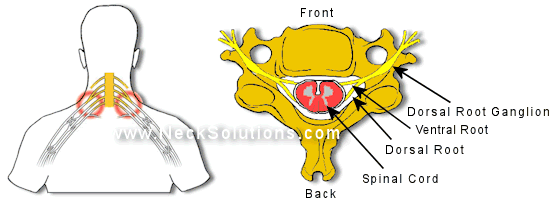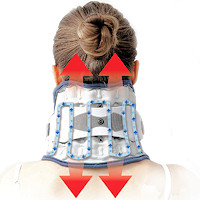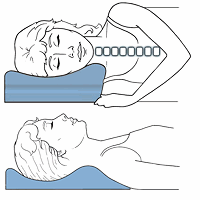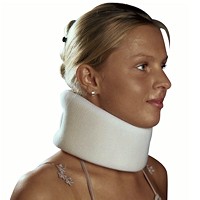C4 Radiculopathy Can Mimic Mechanical Or Axial Neck Pain And Confuse The Problem.
Radiculopathy is commonly called a pinched nerve and we have discussed this in greater detail, however, the 4th spinal nerve involved in c4 radiculopathy, which exits between the 3rd and 4th cervical spinal bones, poses a frustrating problem in regard to mechanical neck pain.
The area supplied by the this nerve includes areas typically noted in mechanical neck pain; the upper shoulders and between the shoulders. Therefore, radiculopathy of this nerve (C4) may cause apparent mechanical or axial neck pain.

The most common reasons for radiculopathy are herniated discs and disc degeneration and it is important to be able to distinguish between C4 radiculopathy and true mechanical neck pain as this will affect the treatment options and considerations.
One way to tell the difference is that C4 radiculopathy is one sided pain around the scapula and mechanical neck pain from cervical degenerative disc disease is usually felt on both sides.
Often, C4 radiculopathy will present with symptoms involving the nerve like altered sensations (numbness, tingling). A problem for the examiner in the diagnosis is that there is no distinct muscles to test for strength or reflex for this nerve.
A 2023 study in Pain Practice found that patterns of pain do not always correlate with the level of nerve involvement indicated by MRI. This can be due to the large overlap of pain and distribution reported by patients. This stresses the importance of diagnostic studies to confirm diagnosis.
Besides medications, there are some things which may help alleviate the pain. With surgery it is not always straight forward, however, cervical traction may help alleviate or lessen the pain. Typically, low force traction devices should be used provided there are no specific contra-indications. You can check with your surgeon, then perhaps have a trained therapist see if manual traction offers any relief, and at what force. If This works, the proper device can be selected.
A 2018 analysis in Physical Therapy supports the use of mechanical traction for cervical radiculopathy as an additional method for pain reduction. Mechanical traction had a significant effect on pain at short and intermediate terms and significant effects on disability at intermediate term.
 Neck Traction Devices Neck Traction Devices |
 Cervical Pillows Cervical Pillows |
 Neck Support Collars Neck Support Collars |
Pillows can be frustrating, however, general guidelines for surgery related pillows. Good cervical pillows that follow ergonomic principles can be beneficial. Often, with c4 radiuculopathy, extension or tilting the head back can increase symptoms. If this is the case, a higher pillow height in back sleeping can be beneficial making the use of the latex functional pillow with insert a good choice. Don’t use two pillows as this can be unstable.
When side sleeping, you may find that one side needs to be higher or lower depending on your symptoms. So, if you prefer one side, make sure it is at a level that reduces the pain. This is often related to an antalgic position; tilting the head to either side eases pain. So, there needs to be this consideration when side sleeping. If possible, a folded towel can be placed under one side of the pillow to adjust the height.
Depending on your situation, reclining or resting may require a support of typical travel pillows. These are usually u-shaped and can help position the head in various seated or reclined positions. While some complain they push the head forward, if you have pain on extension, this can actually be a blessing and can also be tried while sleeping.
The next part focuses on failed neck surgery as a cause of mechanical neck pain.
Mechanical Neck Pain | Features Neck Pain | Radiographs Neck Pain | Cervical Strain | Cervical Degenerative Disc Disease | Failed Neck Surgery | Rheumatoid Neck Disorders | Shoulder Problems | Summary
